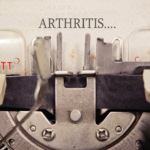In terms of treatment response, the investigators did not find any association of ultrasound features and DAPSA-LDA, although a greater reduction in DAPSA showed an association with high baseline synovitis, peritenonitis and enthesitis structural scores.
As the authors conclude, imaging and clinical features of PsA can be discordant, although synovitis, peritendinitis and tenosynovitis may correlate more strongly with disease activity and treatment response than other imaging features.
These findings suggest only limited utility of ultrasound to evaluate the course of PsA, but they are nevertheless important in highlighting the complexity of joint lesions in PsA and the need to better understand the relationship of different clinical manifestations to underlying disease mechanisms, on one hand, and treatment response on the other.
3. What Drives Pain?
Abstract 1388: Gazel et al.3
The evaluation of disease activity in patients with PsA is challenging because a major site of involvement, the entheses, is difficult to assess on clinical exam; current approaches lack sensitivity and specificity. As a new approach to assess better enthesitis, Gazel and colleagues combined ultrasound with functional MRI (fMRI) of the brain in a proof-of-concept study to determine whether advanced imaging can illuminate the underlying pathogenesis and drivers of pain in PsA.
The study involved 12 patients who were divided into two groups: five patients in Group 1 had Achilles enthesitis on exam and a positive ultrasound (hypechogenicity and Doppler signals), and seven patients in Group 2 had negative ultrasound, with or without Achilles tenderness. Patients had fMRI imaging with rest and after induction of pain by increasing pressure with a blood pressure cuff.
The results of the study indicate that those patients with positive findings on ultrasound imaging had more neural activity than ultrasound-negative patients when processing pain. Further, the ultrasound-positive patients showed more neural activity in brain regions related to movement, body representation and pain. Together, these findings suggest that those patients with enthesitis on ultrasound process pain differently than patients without enthesis on ultrasound imaging, even with pain.
This study is important because it suggests new ways to better assess drivers of pain in PsA patients, delineate pathogenesis and categorize treatment responses. Given the large number of PsA patients who currently have persistent pain despite current agents, new biomarkers are needed to determine differences in the effects of therapy on the arthritis vs. enthesitis. In addition, new biomarkers would be valuable in determining whether persistent pain represents nociplastic pain or central sensitization as opposed to inadequately treated enthesitis.


